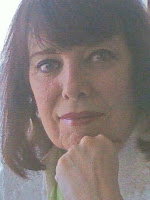Daily Excerpt: Helping the Disabled Veteran (Romer): Introduction
Excerpt from Helping the Disabled Veteran
Introduction
On a beautiful sunny day, I
found myself sitting on a bench in the Ormond Museum Memorial Gardens, sur-
rounded by tall
palm trees and lush foliage next to a small pond dotted with water lilies. It
was December 7th, Pearl Harbor Day, a fitting time to visit this park, which
was founded by the City of Ormond Beach, Florida as “a living monument to
creative freedom and equality of all persons, and to commemorate the service of
World War II veterans who fought valiantly for that ideal.” Inside the Museum
there is a bronze plaque inscribed with the names of Ormond Beach residents who
fought in the war, with an honor roll commemorating those who perished.
The Museum does not limit itself
to veterans of World War II. On the grounds we can find a monument for local
soldiers who died in World War I, and more recently, two more memorials were
added—one dedicated to soldiers of the Vietnam War and another to veterans of
the Korean War.
The Vietnam Memorial is especially touching. A tear came
to my eye when I first saw it situated at the crossroads of the path leading
across the pond and the path heading back to the Museum. The realistic
sculpture features a bronze chair with a soldier’s helmet resting on the seat
and a pair of worn boots standing underneath. A jacket is flung over the side
of the chair, with a dog tag that steals focus:
The Price of Freedom
A folded American flag rests on
the chair next to the helmet, its raised stars clearly visible. The sculpture
is by artist Gregory Johnson and is dedicated to the Veterans of the Vietnam
War (1959-1975)—a note on the Museum’s website emphasizes “those who never
returned from the Vietnam war.”
The second monument is more
abstract but equally stunning. Created by artist Mark Chew, the sculpture
“represents an eternal flame,” according to the nearby plaque. A silvery toned
steel monument of symmetrical pieces reaching toward the sky, the sculpture is
dedicated to the Veterans of the Korean War (1950-1953).
My late husband, Jack, served in
Korea, but not in the Korean War. He served in 1962-63, the “Vietnam era,” and
blessedly, he did not have to fire a gun. In fact, Jack produced the Bob Hope
show for the troops during his tenure, and the Army sent him to a motion
picture school afterward. It was a career he followed the rest of his life.
Jack was always extremely grateful to have been given that opportunity.
My husband passed on in 2011,
after a long illness during which he was fortunate enough to benefit from the
services of the Veterans Administration in Daytona Beach. He was always
laudatory in his remarks about the VA, and I too got to know the organization
well. The VA took care of Jack in his final years—warmly, professionally and
with an abundance of compassion—and I was grateful.
War memorials, the Veterans Administration, our own memories of those who served in the armed forces—these are some of the ways we honor and assist our veterans. The men and women who served in World War I, World War II, the Korean War, Vietnam, Kuwait, Afghanistan, Iraq and other wars don’t always have as much support as they need. It is up to those of us who care to make a difference in their lives.
Read more posts about Joanna and their books HERE.
Read more books about veterans HERE.
Sign up for the MSI Press LLC newsletter





Comments
Post a Comment